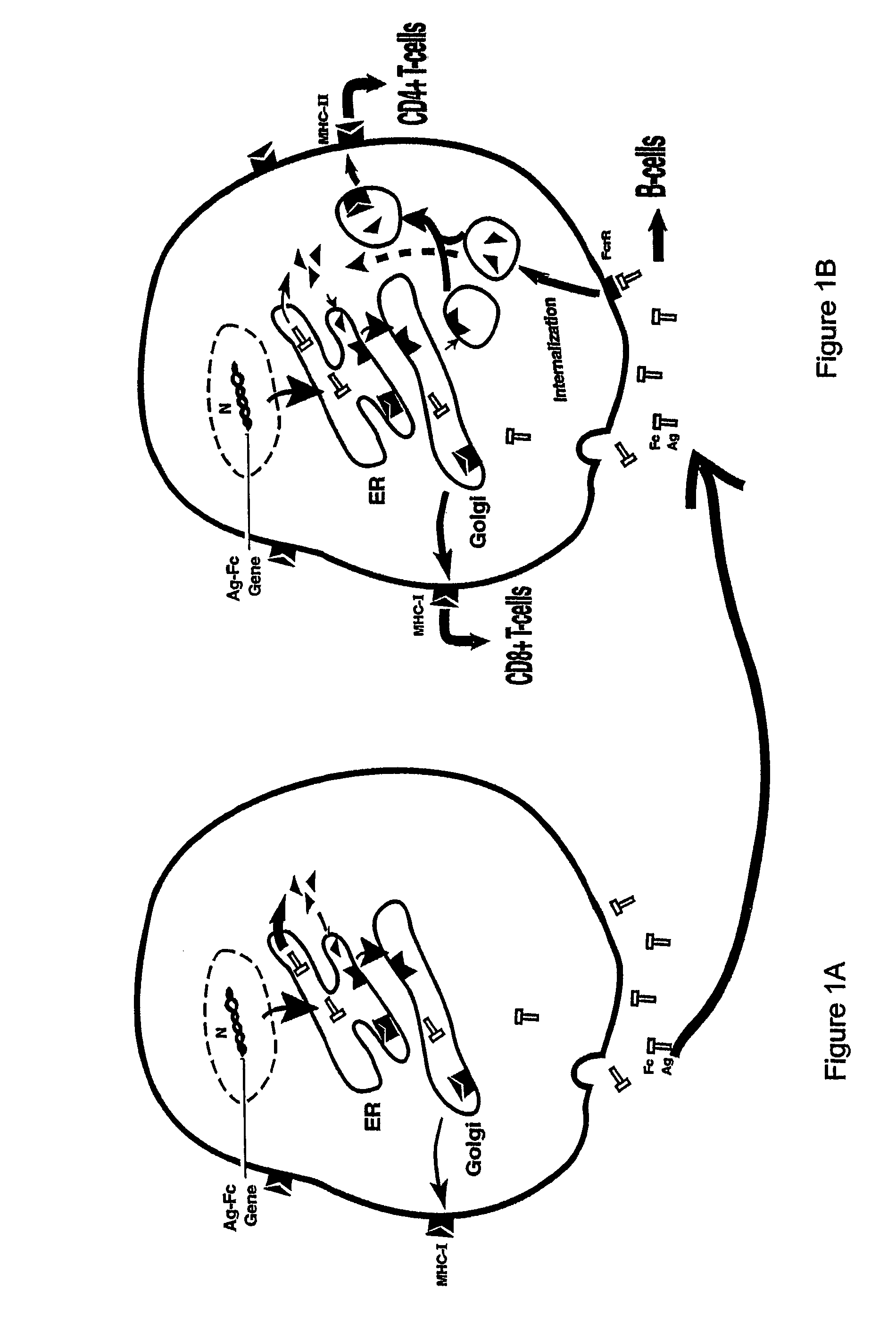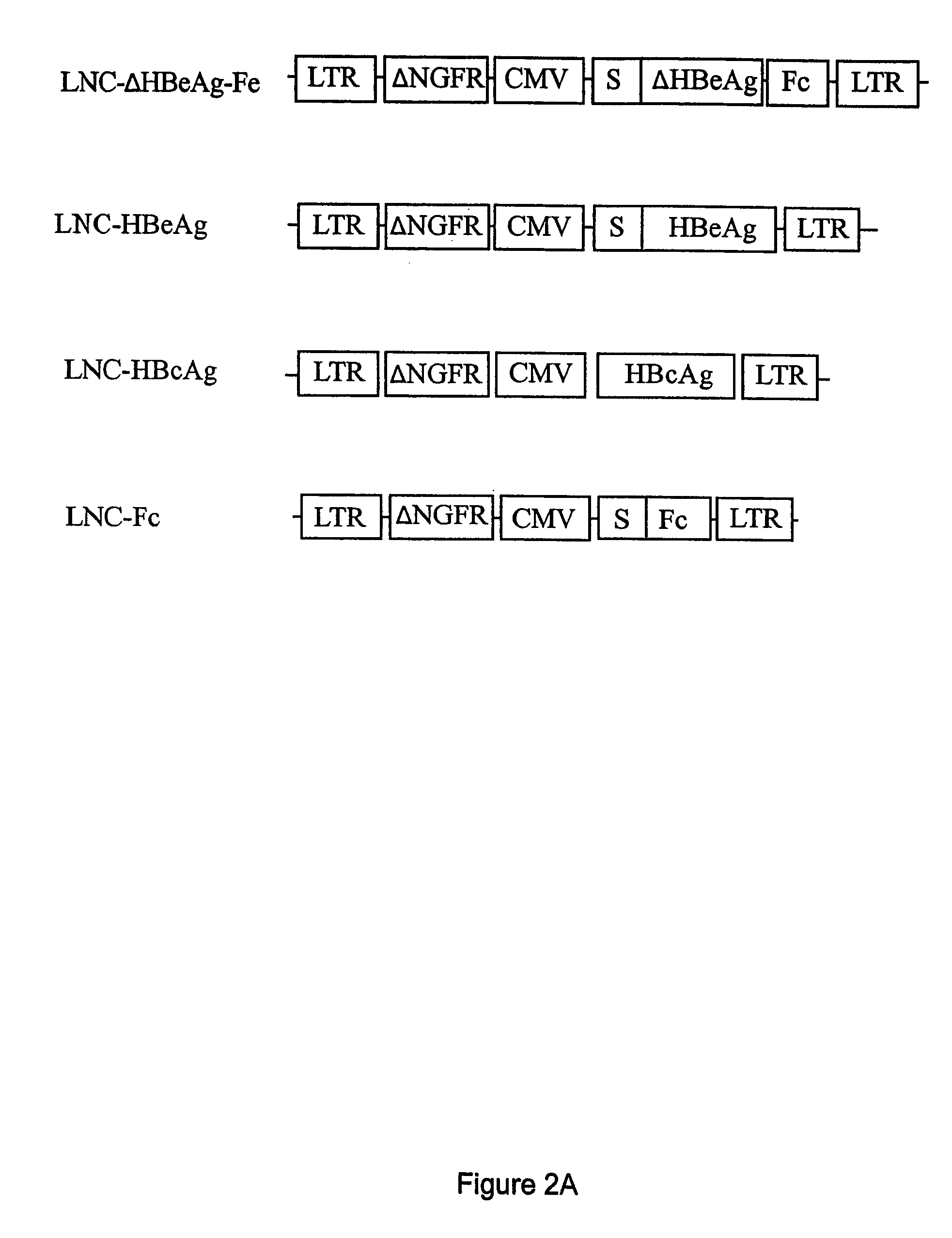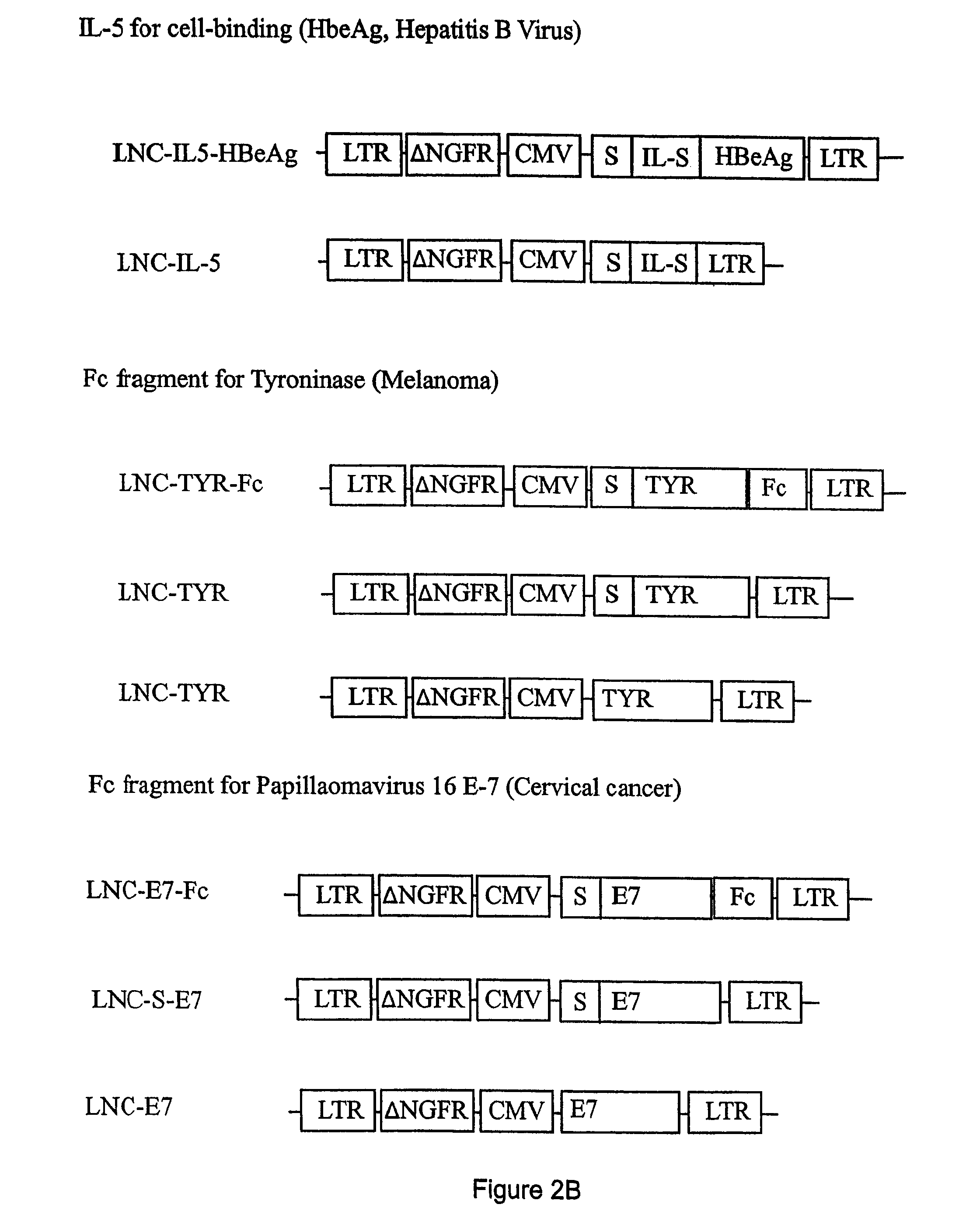Compositions and methods for identifying antigens which elicit an immune response
a technology of antigens and immune responses, applied in the field of expression vectors, can solve the problems of induction of effective immune responses, malignant cell growth, and failure of human immune system to control and clear many pathogenic infections, and achieve the effect of increasing the efficiency of secretion
- Summary
- Abstract
- Description
- Claims
- Application Information
AI Technical Summary
Benefits of technology
Problems solved by technology
Method used
Image
Examples
example 1
Construction and Expression of HBe Antigen in a Retroviral Vector
[0197]Although both HBcAg and HBeAg proteins are encoded by the HBV pre-CC gene, the secretory HBeAg protein is initiated at a start codon twenty nine residues upstream of the start codon for HBcAg. The HBeAg gene obtained from the American Type Culture Collection (Rockville, Md.) was repaired to correct two mutations. The two mutations were found to occur from a single base pair deletion, which caused a frameshift at codon 74, resulting in two consecutive stop codons at 84 and 85. These mutations were corrected by inserting the deleted base using PCR mutagenesis. The arginine-rich, C′-terminal sequence of HBeAg (aa 150-185) which is cleaved during viral infection was deleted. The truncated HBeAg gene was then fused in-frame with an IgG Fc fragment. The HBe-retrogen fusion gene (HBe-retrogen) was cloned into the retroviral vector (LNC-NGFR), or the expression vector pRc / CMV. The vectors comprising HBcAg (cytosolic) and...
example 2
Transduction and Expression of HBe-Retrogen in Dentritic Cells (DCs)
[0200]To assess the “retrogen” strategy in DCs, the retroviral vectors containing the HBe-retrogen or various control genes including a NGFR marker (FIG. 2A) were produced from PA317 packaging cells using the transient transfection. Murine bone marrow cells were obtained from C57BL / B6 mice. The cells were stimulated in culture medium supplemented with murine stem cell factor (SCF) and IL-6, and were transduced with the retroviral vectors as described infra, et al.
Transduction of DCs
[0201]PA317 packaging cells obtained from the American Type Culture Collection (Rockville, Md.) at approximately 40% confluency were cultured in 100 mm culture dishes with Dulbecco's Modified Eagle Media (DMEM) containing 10% fetal bovine serum (FBS). The cells were transfected with 10-15 μm filter.
[0202]Murine bone marrow was flushed from the bones of the mouse limbs, passed through a nylon mesh and depleted of red cells with ammonium ch...
example 3
In Vitro Activation of Naive CD4+-T-Cells
[0206]To evaluate whether the transduced DCs were capable of priming naive CD4+-T-cells in cell culture, naive CD4+-T-cells isolated from C57BL / B6 mouse spleen cells were co-cultured with murine DCs transduced with the retroviral vectors of Example 1 at a ratio of 1:20 (DCs:T-Cells). CD4+ T cells were isolated from the suspension of mouse spleens using a CD4+ T cell enriching column (R&D Systems, Minneapolis, Minn.). CD8+ T cells were isolated from the suspension of mouse spleens using a CD8+ T cell enriching column (R&D System, Minneapolis, Minn.). Purified CD4+ or CD8+ T cells were cultured in RPMI-1640 supplemented with 10% FBS at 37° C. and 5% CO2.
[0207]When naive CD4+-T-cells were co-cultured with the DCs transduced with either HBcAg, HBeAg or Fc fragment gene, only low or background levels of granulocyte-macrophage colony-stimulating factor (GM-CSF) and interferon (IFN)-γ were detected by ELISA in the culture medium. Further, no apparen...
PUM
| Property | Measurement | Unit |
|---|---|---|
| concentration | aaaaa | aaaaa |
| concentration | aaaaa | aaaaa |
| pH | aaaaa | aaaaa |
Abstract
Description
Claims
Application Information
 Login to View More
Login to View More - R&D
- Intellectual Property
- Life Sciences
- Materials
- Tech Scout
- Unparalleled Data Quality
- Higher Quality Content
- 60% Fewer Hallucinations
Browse by: Latest US Patents, China's latest patents, Technical Efficacy Thesaurus, Application Domain, Technology Topic, Popular Technical Reports.
© 2025 PatSnap. All rights reserved.Legal|Privacy policy|Modern Slavery Act Transparency Statement|Sitemap|About US| Contact US: help@patsnap.com



